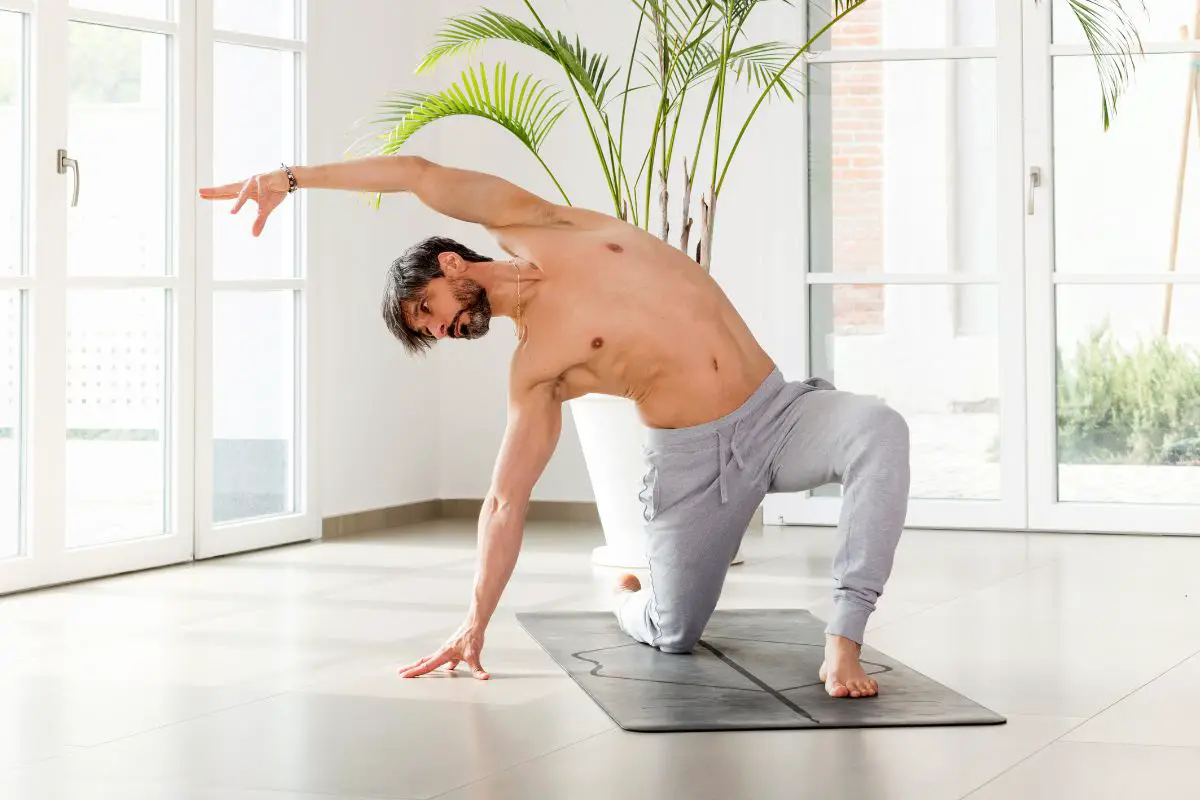Exercise

When it comes to our spine, one of the most overlooked parts of it is the thoracic spine, which is actually the largest singular portion of the spine and contains all of the vertebrae that can be found between the neck and the lower back.
As a part of its function, the thoracic spine is designed to absorb the force that is exerted on our spines on a daily basis, as well as providing stability too.
As a result, it is capable of a wide range of motion and movement, so ensuring it can move well is incredibly important to its health.
So, if you want to know some of the best exercises that you can do at home in order to keep your thoracic spine’s movement healthy, as well as learn more about the importance of the thoracic spine itself, then this guide will provide you with everything that you need to know!
Why Is The Thoracic Spine Important?
The thoracic spine, or upper back, is an important part of the spine for a number of different reasons, and is actually much more important to the way we are able to move than people might initially realize!
First, it helps to support the weight of the upper body and maintain good posture.
The thoracic spine is connected to the ribcage, which helps to protect the internal organs and provide a stable foundation for the upper body.
Secondly, the thoracic spine is responsible for a significant amount of movement. It allows for flexion and extension, as well as lateral flexion and rotation.
This movement is important for activities such as reaching, lifting, and twisting, and it helps to maintain flexibility and mobility in the upper body.
Finally, the thoracic spine plays a role in breathing. The ribs attach to the thoracic spine, and the movement of the spine helps to expand and contract the rib cage during breathing.
Overall, the thoracic spine is an important part of the spine that plays a vital role in supporting the upper body, allowing for movement, and facilitating breathing.
It is important to maintain good thoracic spine health and mobility to support overall physical health and well-being.
What Causes Immobility In The Thoracic Spine?
There are a couple of different factors that can contribute to immobility or limited movement in the thoracic spine. Some common causes include:
- Muscular imbalances: If certain muscles in the upper back are tight or weak, it can limit the range of motion in the thoracic spine.
- Degenerative conditions: Osteoarthritis, spinal stenosis, and other degenerative conditions can cause the joints in the thoracic spine to become stiff or inflamed, leading to limited movement.
- Injuries: Trauma or injury to the thoracic spine, such as a fracture or sprain, can cause immobility.
- Poor posture: Slouching or maintaining poor posture for extended periods of time can cause the muscles in the upper back to become tight and limit movement in the thoracic spine.
- Stress: Chronic stress and tension can cause muscle tightness and tension in the upper back, leading to limited movement in the thoracic spine.
It’s important to consult with a healthcare provider if you are experiencing immobility or limited movement in the thoracic spine, as they can help determine the cause and recommend the appropriate treatment.
Treatment may include physical therapy, medications, or other interventions.
Best Exercises For Better Thoracic Mobility

If you think that your thoracic mobility is low, and needs improving, then it is possible to help by engaging your thoracic spine in a variety of different exercises, which will help to increase its mobility over time.
Many of these exercises will require you to lie down, so you’ll want to make sure that you have an unobstructed space where you can lie down comfortably before you begin these exercises.
So, with this in mind, here are a few exercises that can help improve thoracic mobility:
Thoracic Rotation Stretch
This first exercise is particularly easy to do, and is great if you’re looking for an easy exercise that will help your thoracic mobility, and it’s also good for your lumbar too!
To begin, lie on your back with your knees bent and feet flat on the ground. Place your arms out to the sides and let your knees fall to one side.
Hold for a few seconds and then slowly bring your knees back to the center and repeat on the other side.
Cat-Cow Stretch
The cat-cow stretch is a commonly recommended exercise for those who suffer from both thoracic immobility as well as poor lower back mobility too, so it’s a great exercise to incorporate into your routine if you struggle with back pain.
Start on all fours with a flat back and then round the spine and tuck the chin towards the chest (the “cat” position).
Then, arch the back and lift the head towards the ceiling (the “cow” position). Repeat this movement several times.
Chest Stretch
If you don’t have enough space for you to sit or lie down and stretch, then this exercise is another great way of ensuring that you can perform a thoracic mobility exercise.
Stand facing a wall with your hands on the wall at shoulder height. Step forward with one foot and lean forward, keeping your arms straight.
Hold for a few seconds and then push back to the starting position. Repeat on the other side.
Shoulder Blade Squeeze
Another great thoracic mobility exercise that you can complete wherever you are, this exercise is perfect for those who work at a desk all day, as poor posture is one of the biggest causes of thoracic immobility.
Sit or stand with your shoulders relaxed and your arms at your sides. Squeeze your shoulder blades together and hold for a few seconds. Release and repeat.
Upper Back Roll
This exercise is another great way of engaging your thoracic spine in regular movement, and takes just a few seconds to complete too.
In order to do this exercise, all you need to do is simply sit or stand with your arms at your sides and your shoulders relaxed.
Slowly roll your shoulders backward in a circular motion. Repeat a few times in each direction.
Thoracic Extension
Lie on your stomach with your arms at your sides. Lift your head, chest, and arms off the ground, keeping your hips and legs on the ground.
Hold for a few seconds and then lower back down.
Wall Slide
This is yet another good exercise to practice if you’re looking for an exercise to help with your thoracic spine mobility, just make sure the wall space is unobstructed before you start!
Stand with your back against a wall and your feet shoulder-width apart.
Place your arms against the wall and slide them up as high as you can, keeping your back and elbows against the wall. Hold for a few seconds and then slide your arms back down.
Doorway Stretch
If you’re looking for a great exercise to use to exercise your thoracic spine whilst working from home, this is another exercise that you can add to your daily routine.
Stand in a doorway with your arms at shoulder height and your elbows bent. Step forward with one foot and lean forward, keeping your arms against the door frame.
Hold for a few seconds and then push back to the starting position. Repeat on the other side.
Seated Thoracic Rotation
If you need a quick exercise that can help with your thoracic spine whilst working from home or at the office, then this one is super easy to do, and is particularly effective at helping to increase the mobility in your thoracic spine.
Sit in a chair with your feet flat on the ground and your arms at your sides. Slowly turn your upper body to one side and hold for a few seconds. Return to the center and repeat on the other side.
Upward dog

This exercise is a popular one when it comes to stretches to help with back pain, and it’s not just helpful for your thoracic spine, but your entire back too!
Start on all fours and then push up onto your hands, keeping your hips on the ground. Lift your chest towards the ceiling and hold for a few seconds. Lower back down and repeat.
Conclusion
We hope this guide to some of the best thoracic spine exercises has been useful for you, and hopefully you regain some of that lost mobility as you continue to exercise.
Remember to consult with a healthcare provider or physical therapist before starting any new exercise program, and to listen to your body and stop if you feel any pain or discomfort.
It’s also important to start slowly and gradually increase the intensity and duration of your exercises as you become more comfortable and your strength and mobility improve.
Thank you for reading!




